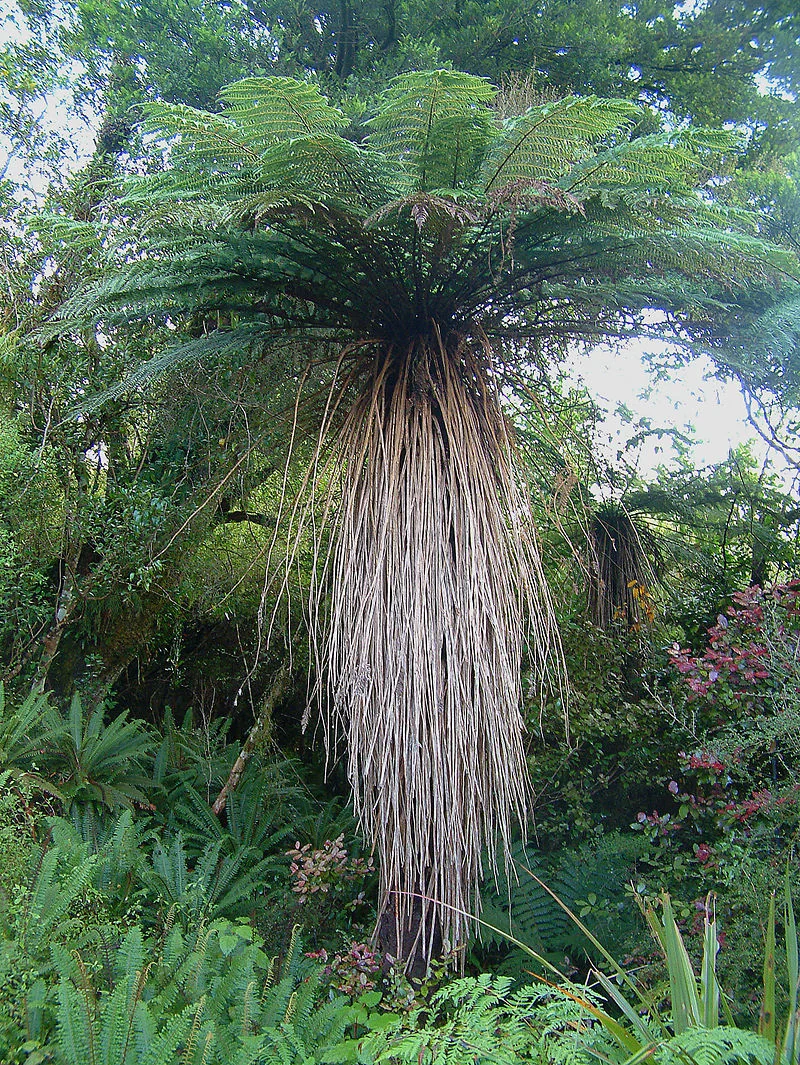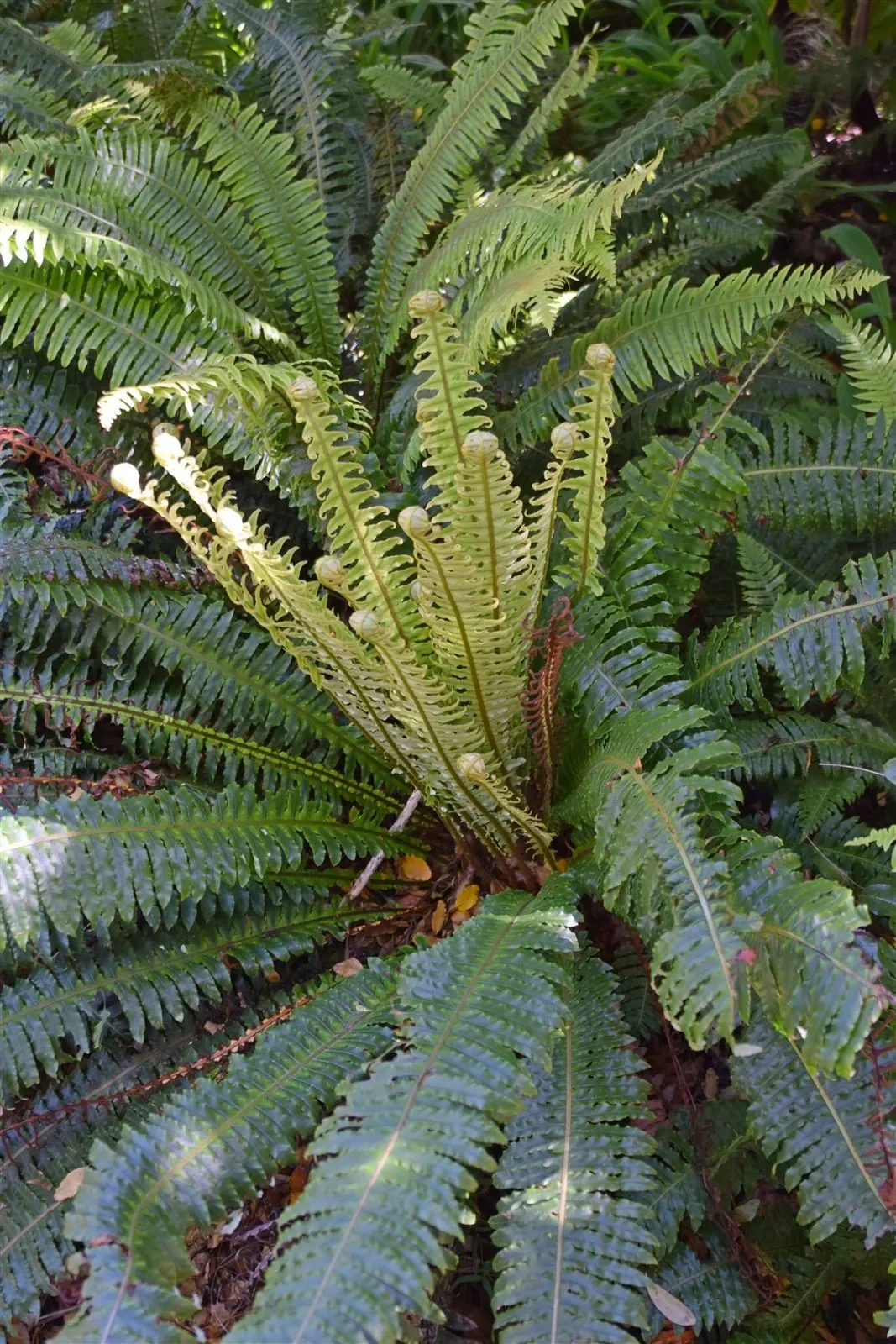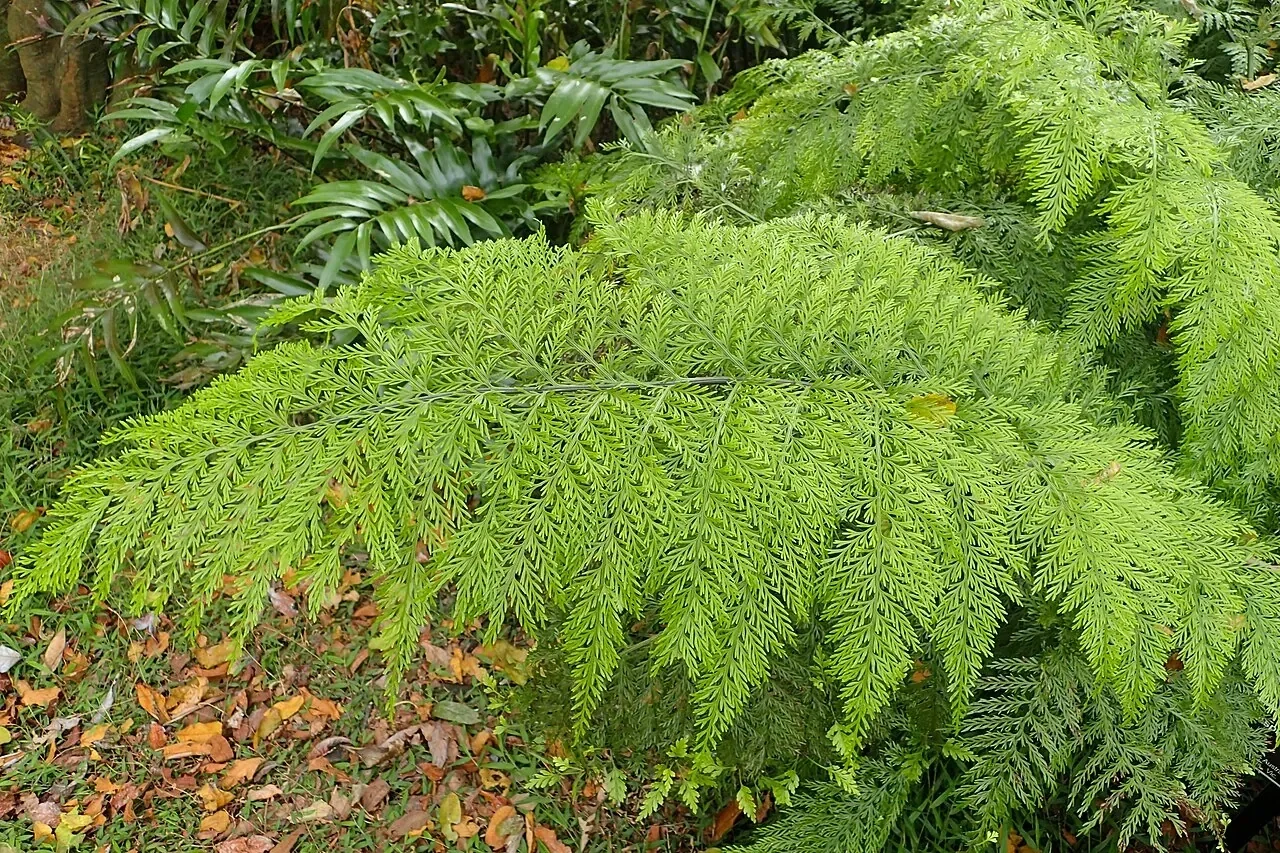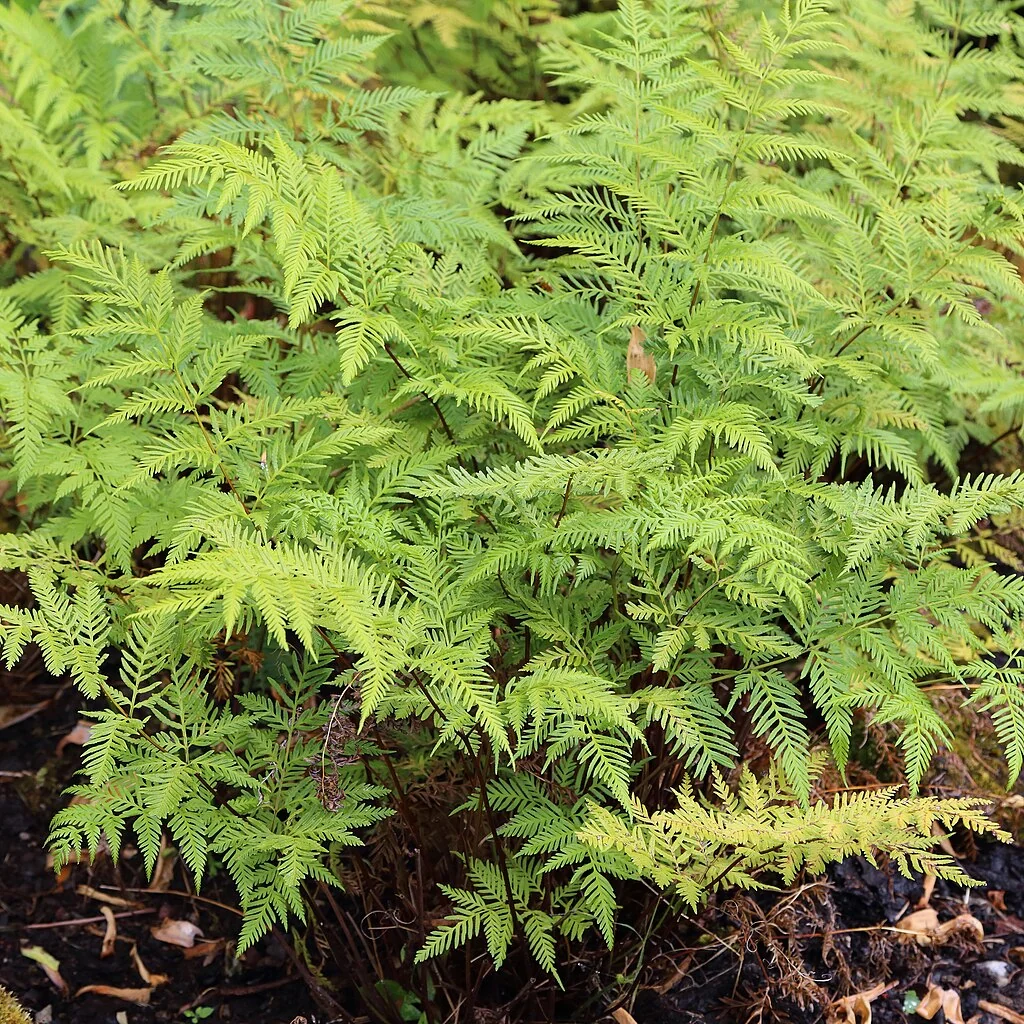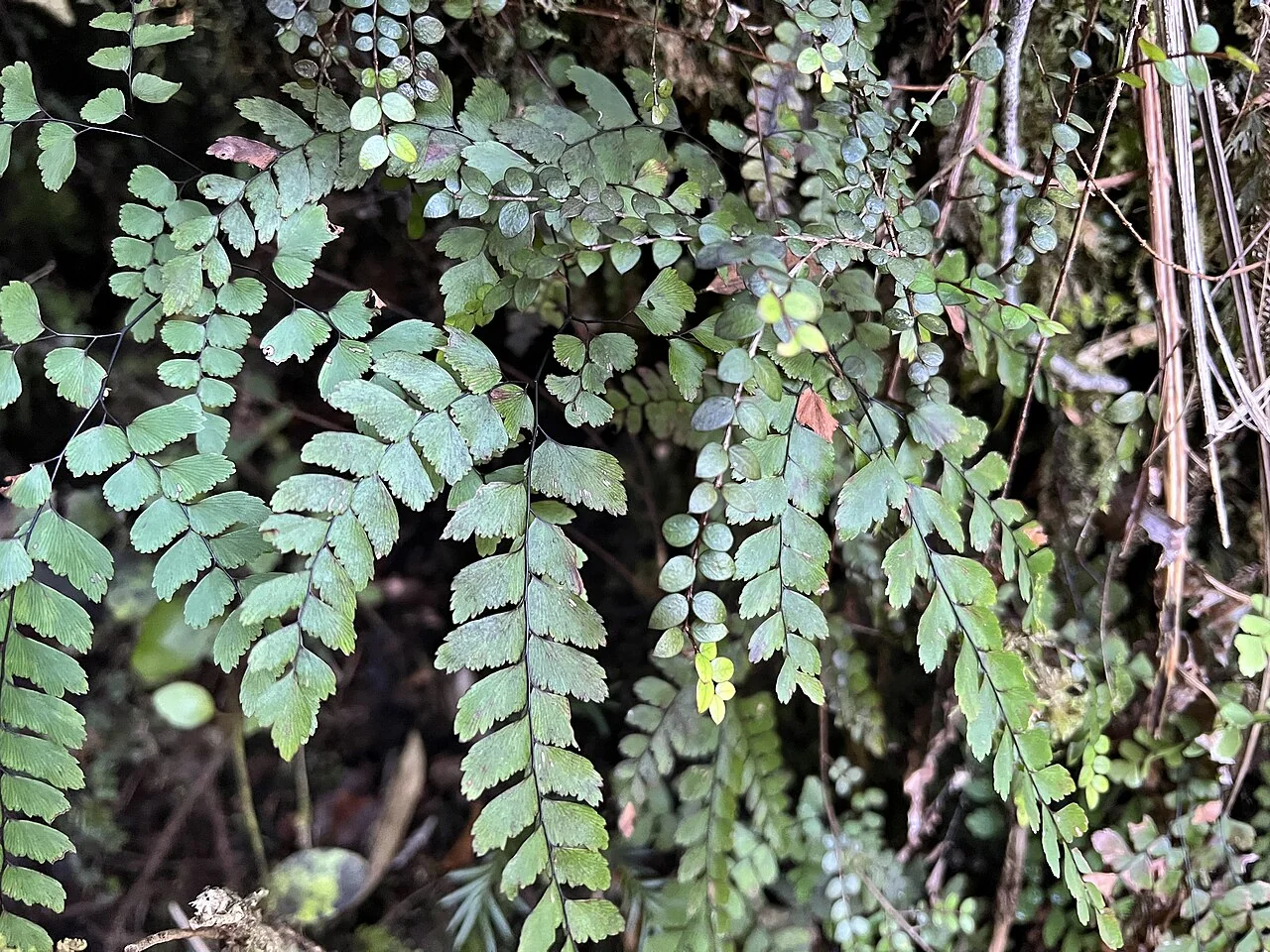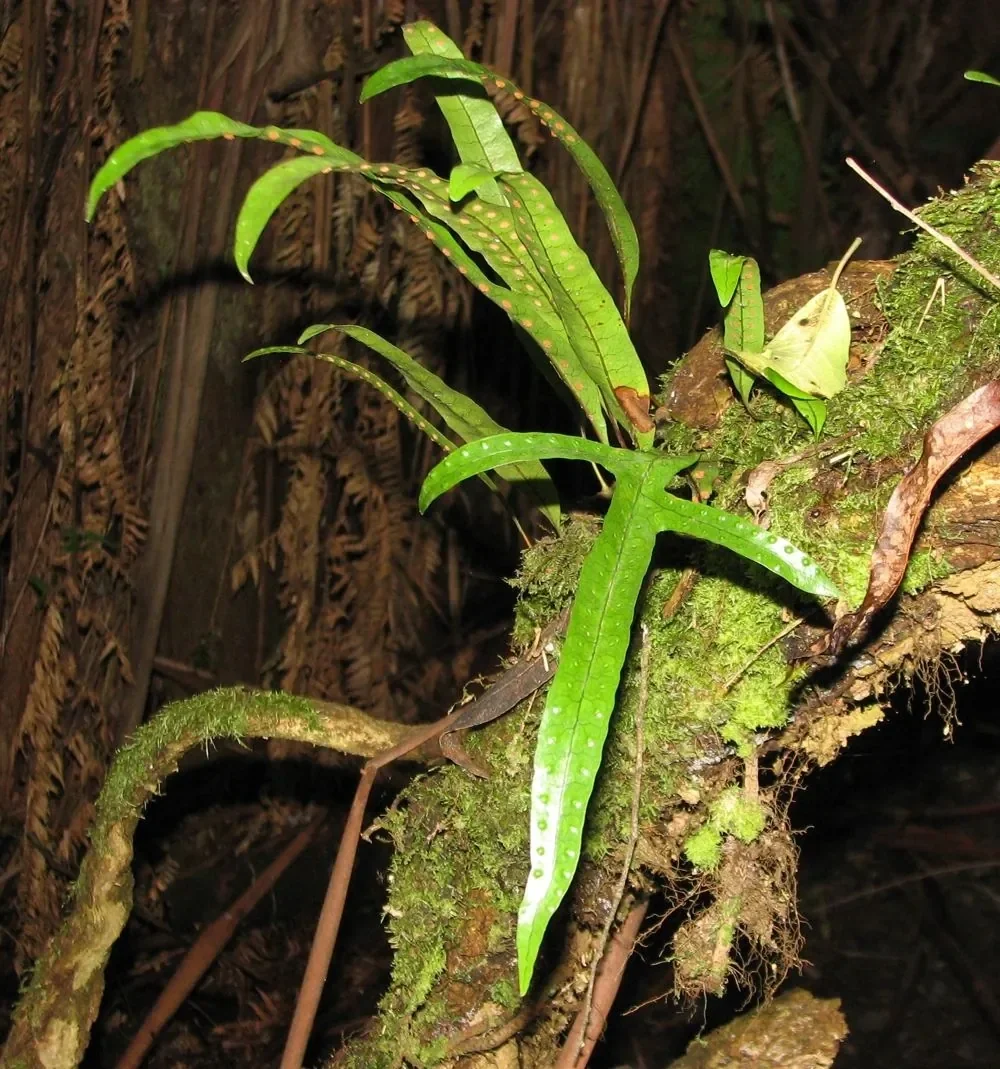
Alsophila Tricolor
Alsophila tricolor
Alsophila tricolor, commonly known as the silvery tree fern, silver fern, or ponga, is an iconic evergreen tree fern native to New Zealand. It is highly recognized for its unique beauty and cultural significance, with its frond serving as a national symbol. native ferns

Plant Description
This striking fern can reach an ultimate height of 8 to 12 meters, with some specimens growing up to 10 meters tall. It features a slender, dark brown, columnar upright stem or trunk, which can be up to 45 cm in diameter at the base and is fibrous with matted aerial roots. The upper part of the trunk retains intricate patterns left by fallen fronds from previous seasons. The most distinctive feature of Alsophila tricolor is its terminal clusters of arching, divided fronds, which can grow up to 3 meters long. These fronds are three-times pinnate, with a mid- to dark green upper surface. When mature, the undersides of the fronds are a striking silvery-white, a characteristic that makes the fern easily identifiable.
Quick Facts
| Scientific Name | Alsophila tricolor |
|---|---|
| Height | 8-12m |
| Spread | Up to 3m |
| Water Needs | High |
| Light | Partial Shade |
| Frost Tolerance | Frost-tender |
| Salt Tolerance | Low |
| Growth Rate | Moderate |
| Lifespan | Long |
Climate Best Suited to
Alsophila tricolor is endemic to New Zealand, found across the North and South Islands, as well as the Three Kings and Chatham Islands. Its natural habitat primarily includes coastal and lowland forests, extending into lower montane areas up to 700-900 meters in altitude. It thrives as a sub-canopy species in drier forests, open scrub, and occasionally on bush margins or in dune slacks. The fern prefers moist, fertile, well-drained, humus-rich soil and benefits from shelter from strong winds.
Regional Suitability
| City | Climate Suitability |
|---|---|
| Whangārei | Ideal |
| Auckland | Ideal |
| Hamilton | Ideal |
| Tauranga | Ideal |
| Rotorua | Ideal |
| Gisborne | Ideal |
| New Plymouth | Ideal |
| Napier | Ideal |
| Whanganui | Ideal |
| Palmerston North | Ideal |
| Wellington | Ideal |
| Nelson | Ideal |
| Christchurch | Moderate |
| Dunedin | Moderate |
| Invercargill | Moderate |
Plant Habitat
This fern is commonly found in coastal and lowland forests, extending into lower montane areas. It thrives as a sub-canopy species in drier forests, open scrub, and occasionally on bush margins or in dune slacks. Alsophila tricolor prefers moist, fertile, well-drained, humus-rich soil and benefits from shelter from strong winds.
Plant Conservation
The conservation status of Alsophila tricolor is currently listed as "Not Threatened" as of 2023. It is widespread and common throughout much of its range, frequently observed in urban vegetation, and is considered one of the most common indigenous tree ferns in New Zealand.
Growing Requirements
Soil Requirements
For optimal growth, Alsophila tricolor prefers moist but well-drained, humus-rich soil.
- Prefers moist, humus-rich soil
- Requires good drainage
Light Requirements
Alsophila tricolor thrives in a sheltered and partially-shaded location, though it can tolerate sun or light shade.
- Prefers partial shade
- Can tolerate full sun if soil is moist
Water Requirements
During hot, dry summers, it's recommended to water the stem as well as the soil, but avoid watering the crown in winter. Once established, it can tolerate drier conditions. Regular watering every 1-2 days in dry weather is crucial until the root system is established, with water applied to the crown, trunk, and surrounding ground.
- Requires regular watering, especially when young
- Water the trunk as well as the soil
Planting Guide
Alsophila tricolor is a frost-tender plant. It can tolerate low temperatures but will not survive being frozen, typically requiring a minimum winter temperature of 10°C if grown in containers under glass in frost-prone areas. In milder climates, it can be grown outdoors without winter protection. Applying liquid fertilizer monthly during the growing season can promote healthy growth. Dead or damaged fronds can be removed as necessary.
Ecological Role
Alsophila tricolor is a significant component of New Zealand's native forests, providing habitat and contributing to the overall health of the ecosystem. The fibrous trunk provides a home for epiphytic plants, insects, and other invertebrates.
Uses & Significance
Garden Uses
This versatile fern is suitable for architectural landscaping, as a forest understory plant, a specimen tree, and can also be grown in containers.
- Specimen plant
- Container planting
- Understory planting
The silvery-white underside of the fronds holds cultural importance in Māori tradition for marking paths in moonlight. The frond is also a well-known national symbol of New Zealand.
- Used to mark paths at night
- National symbol of New Zealand
Ecological Value
The trunk of Alsophila tricolor provides a habitat for a variety of epiphytes and invertebrates.
- Provides habitat for epiphytes and invertebrates
Landscaping Uses
In a landscaping context, Alsophila tricolor is a stunning feature plant. Its large, arching fronds and silvery undersides create a dramatic effect. It is often used as a specimen plant in lawns or as part of a native planting scheme. It can also be grown in large containers on patios or decks.
Seasonal Care Calendar
Spring
In spring, new fronds will begin to unfurl. This is a good time to start applying a liquid fertilizer to promote healthy growth.
- Apply liquid fertilizer
- Monitor for new frond growth
Summer
During summer, regular watering is crucial, especially during dry spells. Water the trunk as well as the surrounding soil.
- Water regularly
Autumn
In autumn, reduce watering as the weather cools. The fern will be preparing for winter.
- Reduce watering
Winter
In winter, avoid watering the crown of the fern. Protect from frost in cooler climates.
- Protect from frost
- Avoid watering the crown
When to Prune and How Much
Pruning is generally not required for Alsophila tricolor. However, dead or damaged fronds can be removed as necessary to maintain the plant's appearance.
- Remove dead or damaged fronds as needed
Always use clean, sharp tools for pruning to minimize the risk of disease.
How to Grow Alsophila tricolor
From Spores
Propagation from spores is a slow but rewarding process. To begin, you will need to collect spores from a mature frond. Look for small, brown, furry patches on the underside of the fronds. These are the sori, which contain the spores. Place a piece of white paper under a frond and leave it overnight. The next day, you should see a fine, brown dust on the paper. These are the spores. Prepare a clean, sterile pot with a lid. A plastic takeaway container with a clear lid is ideal. Fill the pot with a sterile, fine-textured seed-raising mix. Moisten the mix with cooled, boiled water. Gently tap the spores from the paper onto the surface of the mix. Do not cover the spores with more mix. Place the lid on the container and put it in a warm, shaded spot. It is important to maintain a high level of humidity. You should see a green, mossy growth on the surface of the mix within a few weeks to a few months. This is the prothallus, the gametophyte stage of the fern. Tiny ferns will eventually grow from the prothallus. Once they are large enough to handle, they can be carefully transplanted into individual pots.
From Transplanting
Young plants are easily transplanted. Freshly felled trunks can often re-sprout if planted and carefully watered. This is the most common and reliable method of propagation for this fern. To transplant a trunk, make a clean cut and ensure the top is sealed to prevent it from drying out. Plant the trunk in a well-drained, humus-rich soil and water it regularly. New fronds should appear within a few months.
Pests & Diseases
Alsophila tricolor is generally pest-free and disease-free. However, it can be susceptible to scale insects and mealybugs, especially when grown indoors or in a greenhouse. These can be controlled with a horticultural oil spray or by wiping them off with a damp cloth. Good air circulation is important to prevent fungal diseases. Avoid over-watering and ensure the soil has good drainage.
Cultural Significance
Known as ponga or silver fern, Alsophila tricolor holds deep cultural resonance in Aotearoa New Zealand. The silvery underside of the fronds has long been used to mark paths at night, and the frond motif is widely recognised as a national symbol across sport, the military, and civic life.
- Fronds historically used as night-time trail markers
- Enduring national emblem of Aotearoa New Zealand
Bonus Tip
The silvery-white undersides of the fronds were traditionally used by Māori to mark tracks in the forest. The fronds would be laid on the ground with the white side facing up, making them easy to see in the dark.
